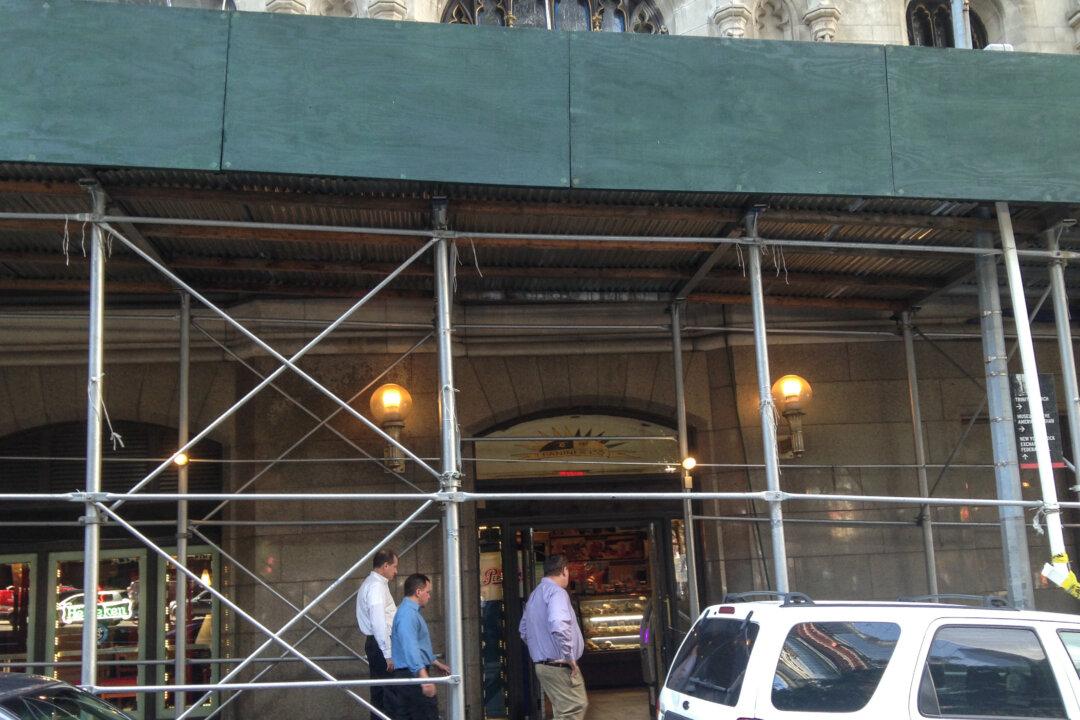NEW YORK—For pedestrians, scaffolding can require fancy footwork on sidewalks already devoid of a tolerable amount of space.
For small businesses, it can be downright treacherous.
Already operating on tiny profit margins, a business obscured by one of the city’s 7,700 sidewalk sheds, commonly known as scaffolding, is likely to lose customers.
The scaffolding covering Panini & Co. in the Financial District has been up for around six months and the owner said business has dropped by around 60 percent.
“I don’t think I’m going to be able to survive,” said Angelo Tzortzatos. “It’s very bad.”
Sometimes the construction workers need to use water, which ends up splashing down through the shed cover outside his entrance, making access even more tricky. He doesn’t know how long the scaffolding will be up.
Tzortzatos has owned the store for 12 years and has another three years on his lease. He said he pays $27,000 a month for rent.
“I don’t know what to do no more,” he said. “I don’t know what to do.”






